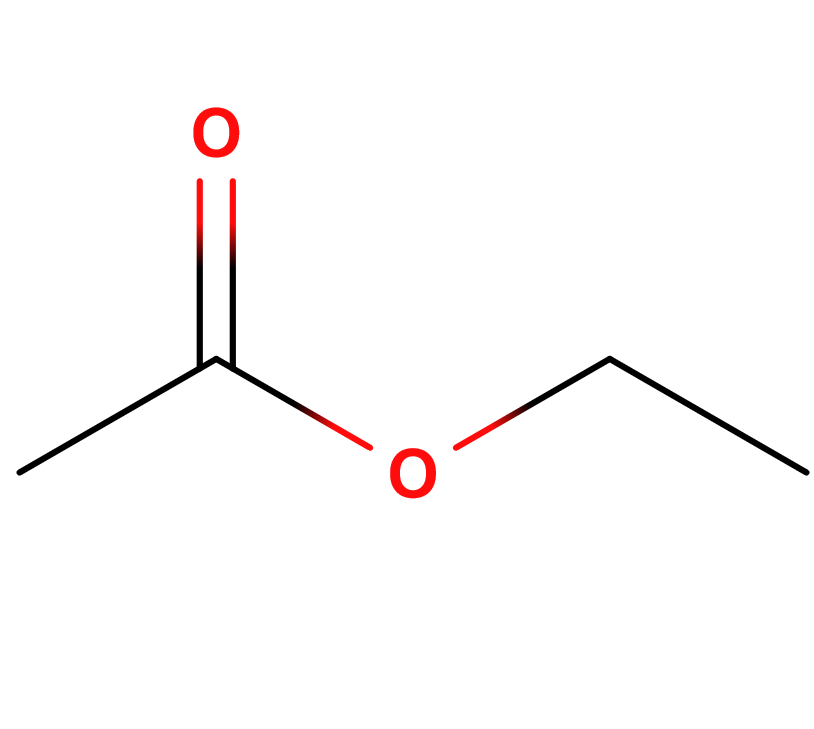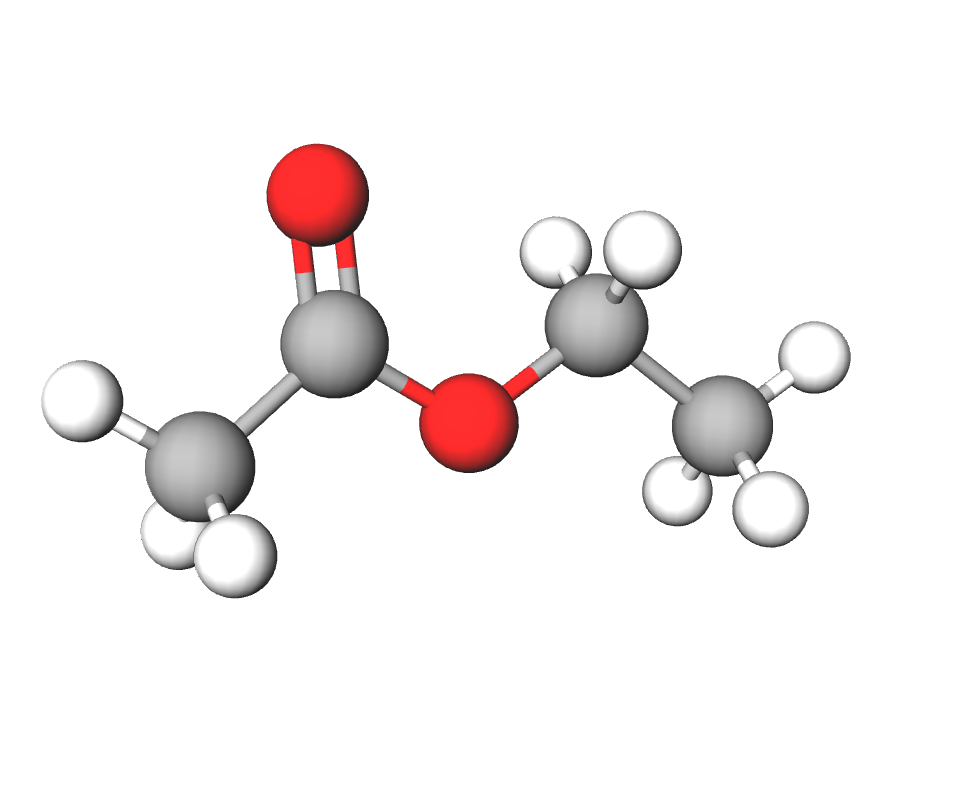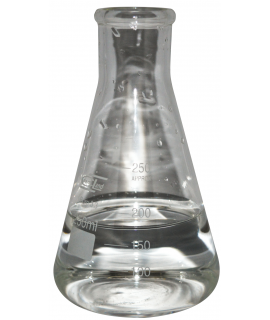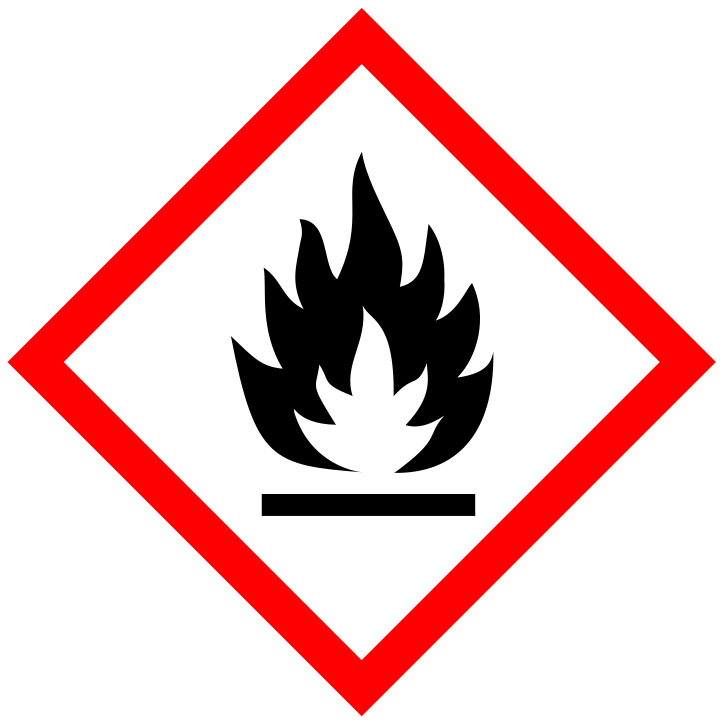ETHYL ACETATE 99%, L
6.50 €
00820400
Acetic ether, CAS 141-78-6, acetic ester, INCI ETHYL ACETATE, ethyl acetate, ethyl and acetic acid ester, ETAC, EA, acetoxyethane
Parameter | Attribute |
Ethyl acetate | Acetic ether, acetic ester, ethyl ethanoate, ethyl and acetic acid ester, ETAC, EA, acetoxyethane |
Formula | C4H8O2 |
Structure |   |
IUPAC | Ethyl ethanoate |
INCI | ETHYL ACETATE |
CAS | 141-78-6 |
Molar mass | 88.106 g/mol |
Density | 0.902 g/cm3 |
Solubility | 8.3 g/100 mL (at 20 °C) Miscible with ethanol, acetone, diethyl ether, benzene |
Ethyl acetate (also known as ethyl ethanoate, usually abbreviated EtOAc, ETAC or EA) is an organic compound with the formula CH3CO2CH2CH3, simplified to C4H8O2. This colourless liquid has a characteristic sweet smell (similar to pear) and is used in adhesives, nail polish removers, and in the decaffeination of tea and coffee. Ethyl acetate is an ester of ethanol and acetic acid.
The solvent ethyl acetate is used primarily as a solvent and diluent. Its advantages are its low cost, low toxicity and pleasant odour. For example, it is commonly used in the cleaning of radio-technical plates and in some nail polish removers (acetone is also used). Coffee beans and tea leaves are made decaffeinated with this solvent. It is also used in paints as an activator or hardener. Ethyl acetate is present in confectionery, food flavours and fruit.
In cosmetics, ethyl acetate is a solvent widely used in nail polishes and cleansers. It is used for its ability to dissolve other substances, including nitrocellulose, or film-forming agents in nail polish. It is a colourless liquid with a sweet smell (fruity smell). It evaporates quickly in perfume, leaving a perfumed odour on the skin. Usually this does not cause any problems. The main INCI functions are:
- Solvent: dissolves other substances
- Perfume: Used for perfumes and aromatic raw materials
In entomology (insect collecting), ethyl acetate is a smothering agent used to collect and study insects. In a killing jar filled with ethyl acetate, the vapour will quickly kill the collected insect without destroying it. As ethyl acetate is not hygroscopic, it also keeps the insect soft enough to be properly attached for collection.
In laboratories and educational institutions, mixtures containing ethyl acetate are commonly used in column chromatography and extraction. Ethyl acetate is rarely chosen as a reaction solvent as it is prone to hydrolysis, peresterification and condensation. It can also be used as a preparative agent in biomedical applications for the preparation of samples for testing.
In the food industry, ethyl acetate is present in alcoholic beverages, cereal crops, radishes, fruit juices, beer, wine, spirits, etc. It has a fruity odour, which is most commonly identified in glues, nail polish removers, decaffeinated tea and coffee and cigarettes. Ethyl acetate is the most common ester in wine and is the product of the most common volatile organic acid, acetic acid, and the ethyl alcohol formed during fermentation. The aroma of ethyl acetate is most pronounced in younger wines and contributes to the overall perception of the 'fruitiness' of the wine. Sensitivity varies, with most people's perception threshold being around 120 mg/l. Excessive levels of ethyl acetate are considered to be a deficiency in wine.
In the cleaning industry, ethyl acetate is used as an ingredient in cleaning products for degreasing or wax melting. It can be found in products intended to remove graffiti or in paint strippers.
Important: Add the item to your basket, fill in the recipient's details and confirm your order. Thank you!
To save your precious time, we will deliver your order to your address at a time convenient for You!
*- The pictures of the goods may not correspond to the actual appearance, colour, assembly or shape of the goods and their packaging. The information in the product description is of a general nature and may not correspond to the information on the packaging of the product and may not be the exact use of the product. The information given on the stocks and prices of goods may, in certain cases, differ from the actual prices and stocks of goods
Signal word: DANGER |
Hazard icons:
|
Danger phrases: H225 Highly flammable liquid and vapor H319 Causes severe eye irritation H336 May cause drowsiness or dizziness |
Precautionary statements: P210 Keep away from sources of heat, sparks, naked flames and hot surfaces.Do not smoke P243 Take action to prevent static discharge P305+P351+P338 In case of contact with eyes: wash gently with water for several minutes. Remove contact lens if present and if easy to do so. Continue to wash eyes EUH066 Repeated exposure may cause dry or cracked skin |
00820400
Related products
(8 other products in the same category)












